Climate Neutral Urban District
in Esslingen am Neckar
In the Swabian town of Esslingen am Neckar, the site of the old freight depot is being turned into an urban research district: the new, innovative “Neue Weststadt” will be built here by 2022. The quarter will integrate the use of hydrogen in urban development and thus achieve annual CO2 emissions of less than 1 ton per inhabitant for housing and mobility.
Energy-saving Living
Sustainable Energy Supply
Zero-emission Technologies
Ecological, Efficient, Social
Climate District Neue Weststadt
An urban concept that makes it possible to experience resource-saving and energy-conscious living and working on site. In addition, it helps to gain knowledge about a sustainable, virtually climate-neutral energy supply and thus contributes to the energy transition. The first buildings have already been completed.
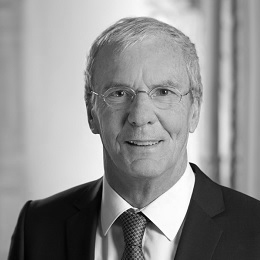
Dr. Jürgen Zieger,
Mayor of the city of Esslingen am Neckar
Solar Construction and the Energy-efficient City
With the interdepartmental funding initiative “Solar Construction/Energy-efficient City”, within the framework of the Federal Government’s sixth energy research program, ways are being sought at neighborhood level to achieve the goal of a climate-neutral building stock by 2050. The “Neue Weststadt” was selected from more than 60 competitors as one of six lighthouse projects in Germany. Joint funding by the Federal Ministry of Economics and Energy (BMWi) and the Federal Ministry of Education and Research (BMBF) is intended to enable successful implementation and monitoring of the project. The starting signal for the project was given in November 2017 – the city of Esslingen and 13 partners will now spend five years working on the foundations for a sustainable energy supply for a climate-neutral urban district.
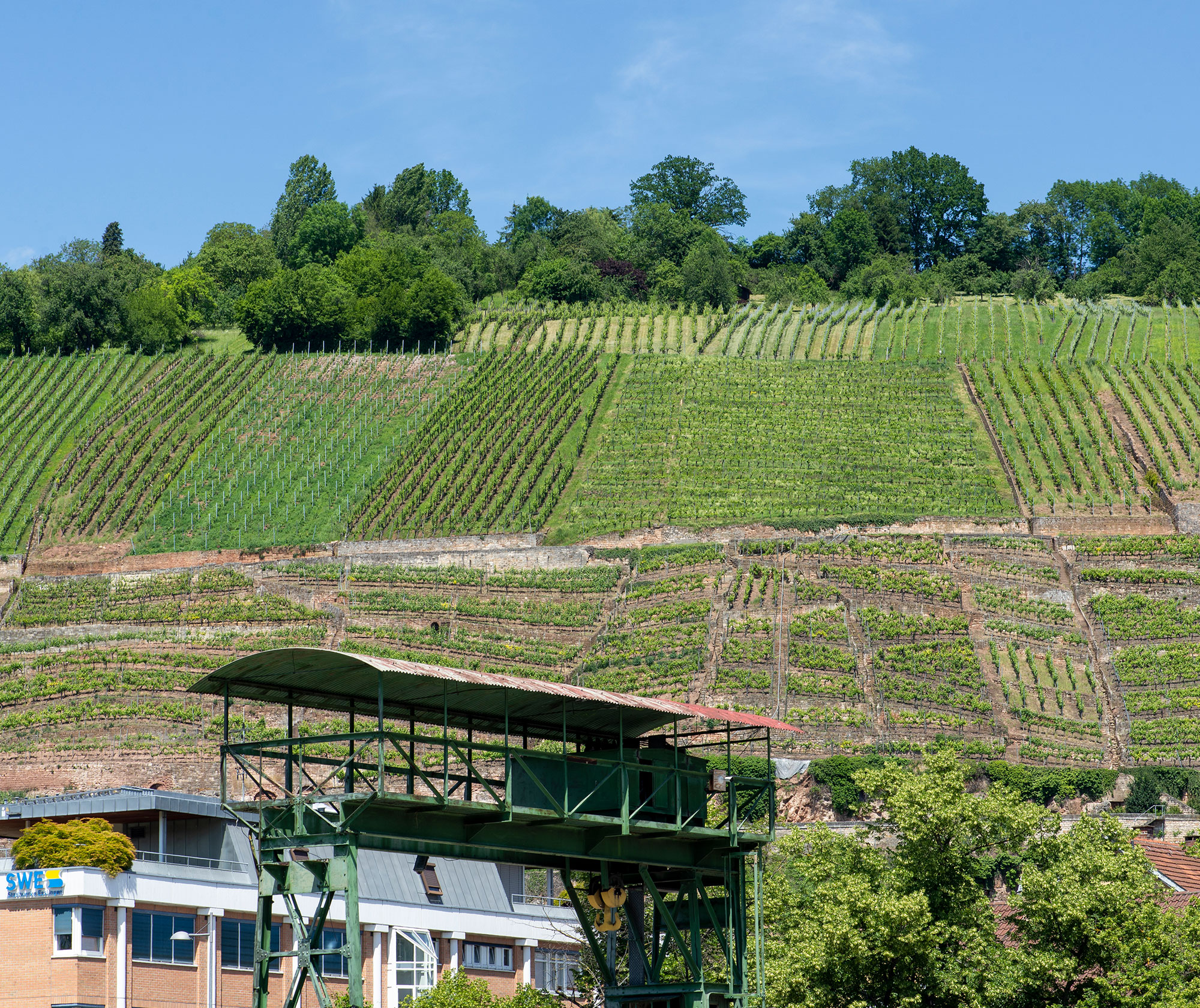
Climate Protection in the "Neue Weststadt" and in the City of Esslingen
On the area of the Neue Weststadt in Esslingen am Neckar, an urban showcase district with 450 apartments, office- and commercial space as well as a new building for the University of Applied Sciences of Esslingen is being built on an area of 100,000 square meters. As part of the research project “Neue Weststadt – Climate District”, a sustainable energy concept is to be implemented at the neighborhood level. The realization of a climate-neutral neighborhood is an important element in achieving the municipal climate protection goals. By 2020, CO2 emissions in the Esslingen city are to be reduced by a quarter. The goal is to create an urban district with less than 1 ton of CO2 emissions per inhabitant and year for housing and mobility.
Carbon Dioxide in Numbers - What is lots, what is little?

In Germany, CO2 emissions per capita are currently at 7.9 tons per year (in 2019).

To absorb 1 ton of CO2, a beech must grow for about 80 years.

1 ton of CO2 corresponds to 400 liters or 2.5 barrels of petroleum.

1 ton of CO2 corresponds to a journey of over 4,900 kilometers in a car that consumes 8.5 liters of gasoline per 100 kilometers. That lasts for a round trip to Moscow.

A flight from Frankfurt am Main to Lisbon (round trip) causes about 1 ton of CO2 per person.
Why 1 Ton?
In order to reduce national greenhouse gas emissions by 95 percent by 2050 and thus achieve greenhouse gas neutrality, Germany would have to achieve per capita emissions of 1 ton per year. This number refers to the entire sphere of life, i.e. not only transport but also energy, consumption and food.
Turning Electricity into Hydrogen
The core of the technologically innovative urban district is the energy supply concept, which provides for a coupling of the electricity, heating, cooling and mobility sectors. An electrolyser converts surplus renewable electricity from local and supra-regional generation into “green hydrogen (H2)” and thus makes the energy storable. If electricity is needed again later in the urban district, the hydrogen can be quickly and easily converted back into electricity in combined heat and power plants. For seasonal long-term storage and decarbonization of the gas sector, the hydrogen produced is also fed into the city’s natural gas grid. In addition, the locally produced hydrogen will be made available for use in industry and mobility outside the district. To this end, the construction of an H2 filling station, an H2 filling station and a gas grid feed-in station in the district is planned.
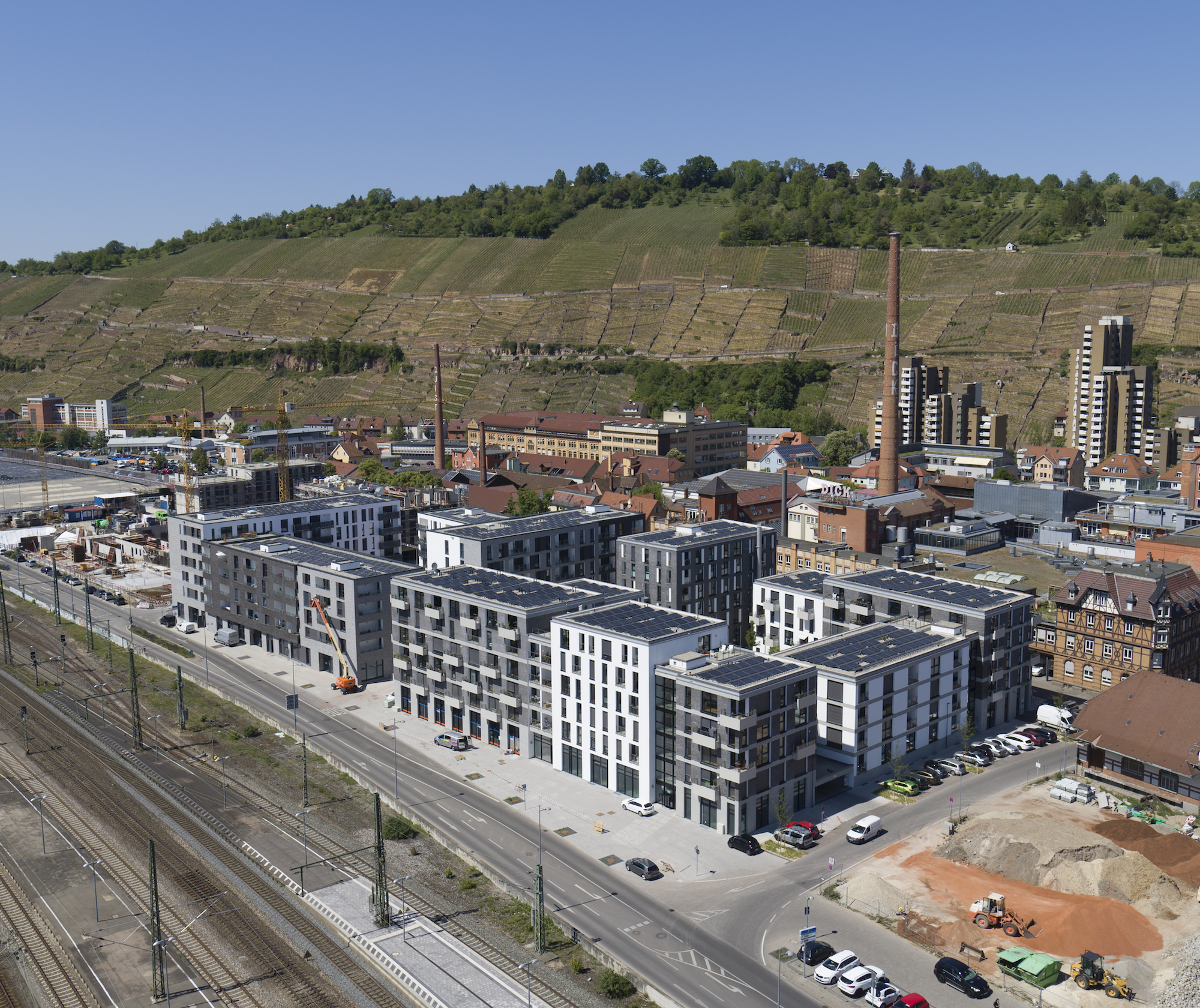
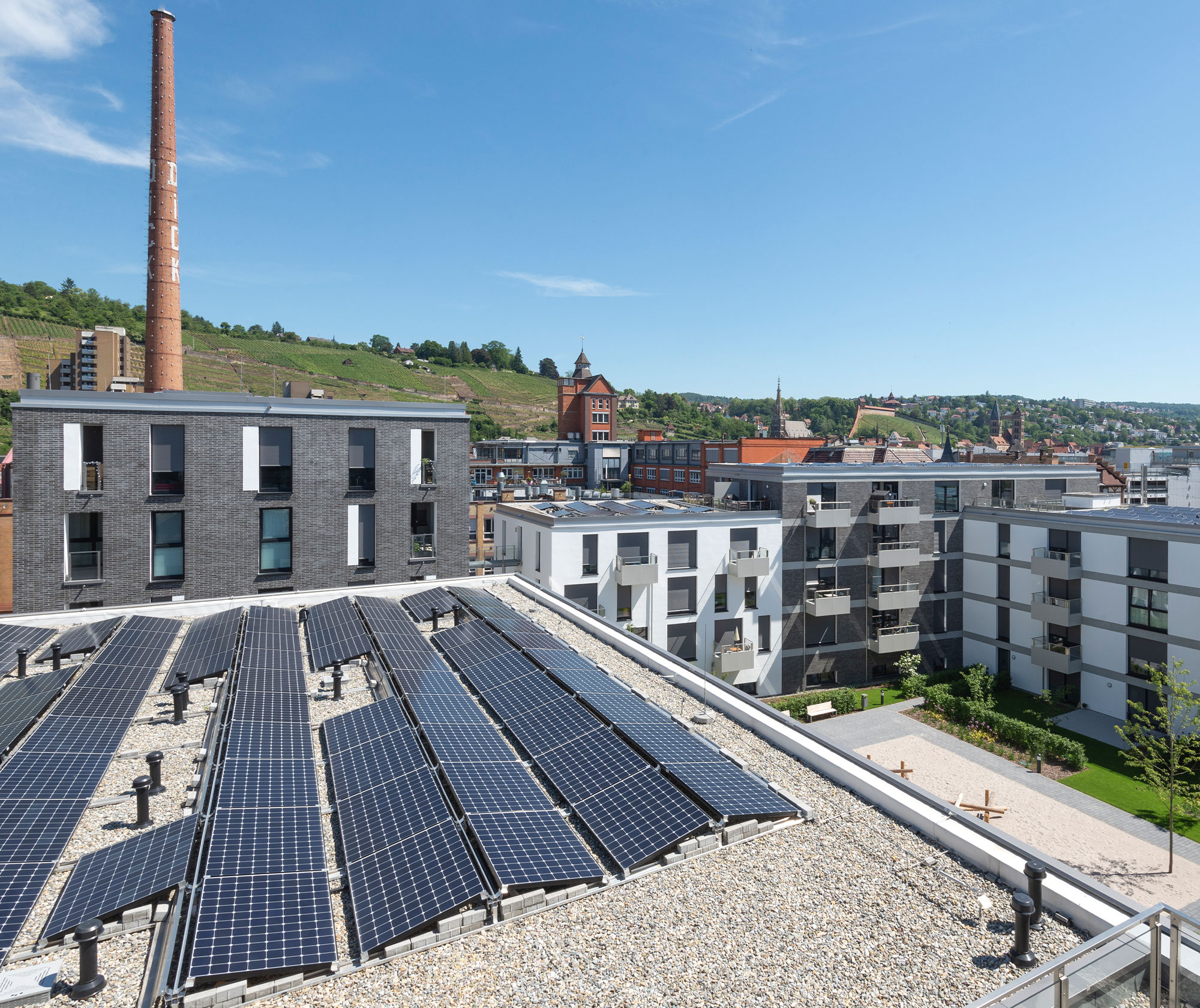
Crosslinking Power, Heat, Cold and Mobility
The innovative concept is being implemented for the first time as a holistic solution in an urban context. In addition to the goal of a high level of renewable self-sufficiency, it is intended to increase the overall efficiency of the energy system. For this purpose, the waste heat generated during the electrolysis process is fed into a local heating network. This infrastructure covers the demand for heating and hot water of the buildings and makes it possible to provide cooling energy in summer by integrating absorption cooling systems. In addition, the locally generated photovoltaic electricity is used for charging electric cars in the private sector and for car sharing vehicles.
Integration of Users
Various measures are planned to actively involve the residents in the neighborhood: For example, an app is to be developed as an user interface in order to receive realtime and targeted information on energy behavior or tariffs. The acceptance and participation of the different user groups is an important component for the success and transferability of the project. In order to learn about and integrate the wishes and satisfaction of the citizens at an early stage, the transformation process on the former freight yard site will be accompanied by socio-scientific monitoring. Using suitable media, the expectations and motives of the citizens are to be identified and taken into account in the construction of the district.
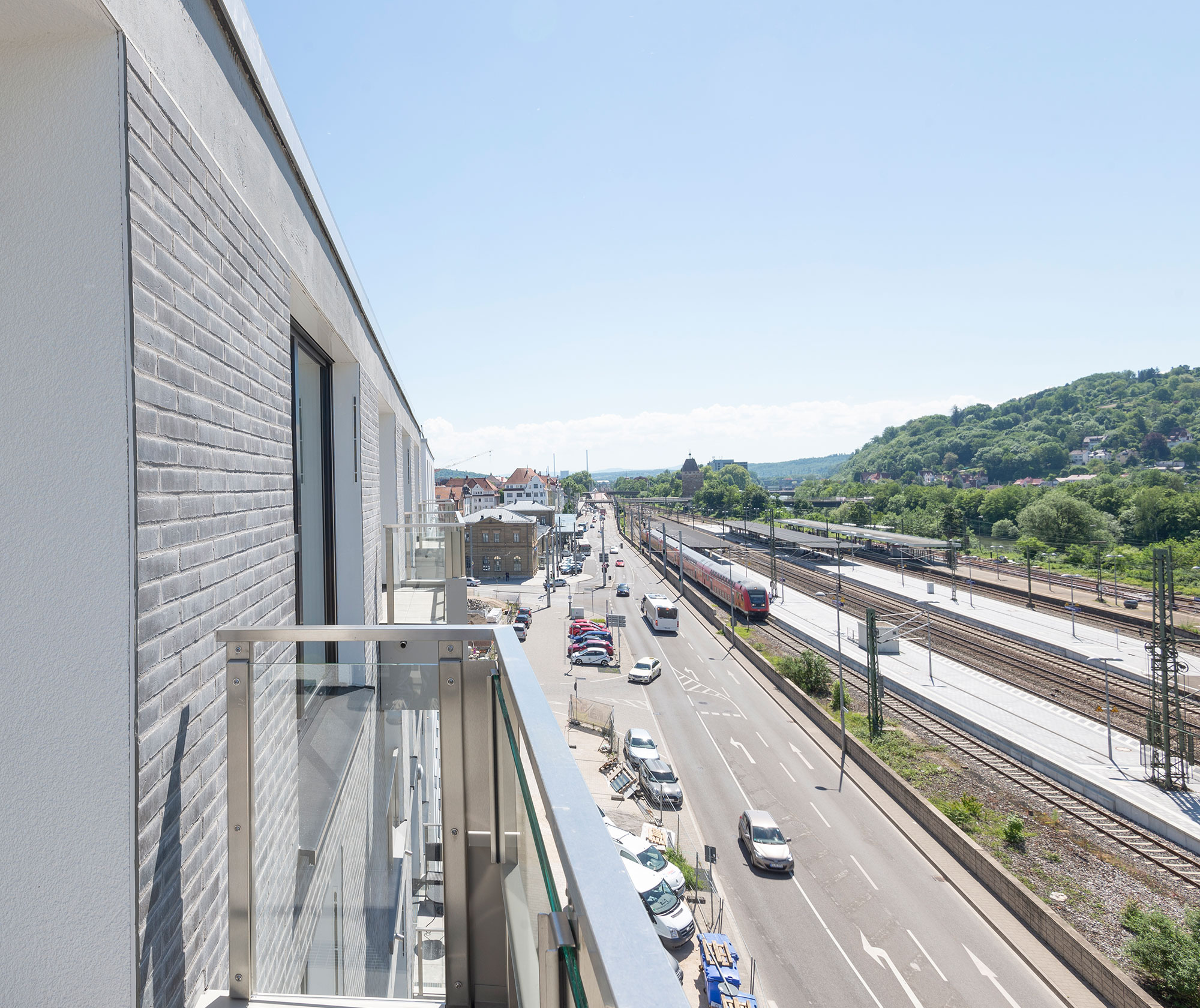

Living in the Neighborhood
The constructional development of the “Neue Weststadt”, with its size of over 12 hectares, is the most significant urban development project of the city of Esslingen am Neckar. In the years to come, an urban district with over 450 apartments in combination with workplaces, local supply, grassy areas and an open space will be created on the centrally located site. This mix of uses will ensure the attractiveness and functionality of the urban mesh of modern workplaces, attractive residential areas and a wide range of leisure activities in a sustainable way. The residential blocks Béla and Citadis are already built and inhabited.
New Building of the University
In the “Neue Weststadt”, an area of 18,500 square meters is available to the University of Applied Sciences of Esslingen. In the first construction phase, four buildings are planned, each with five full floors above ground and a connecting basement. Lecture halls, seminar rooms, offices, a cafeteria, a computer center and a library are planned here. The new campus is directly connected to the residential and commercial blocks. The city center of Esslingen as well as the train station are nearby. The result is an attractive environment for students. The new building is expected to be completed in 2025.
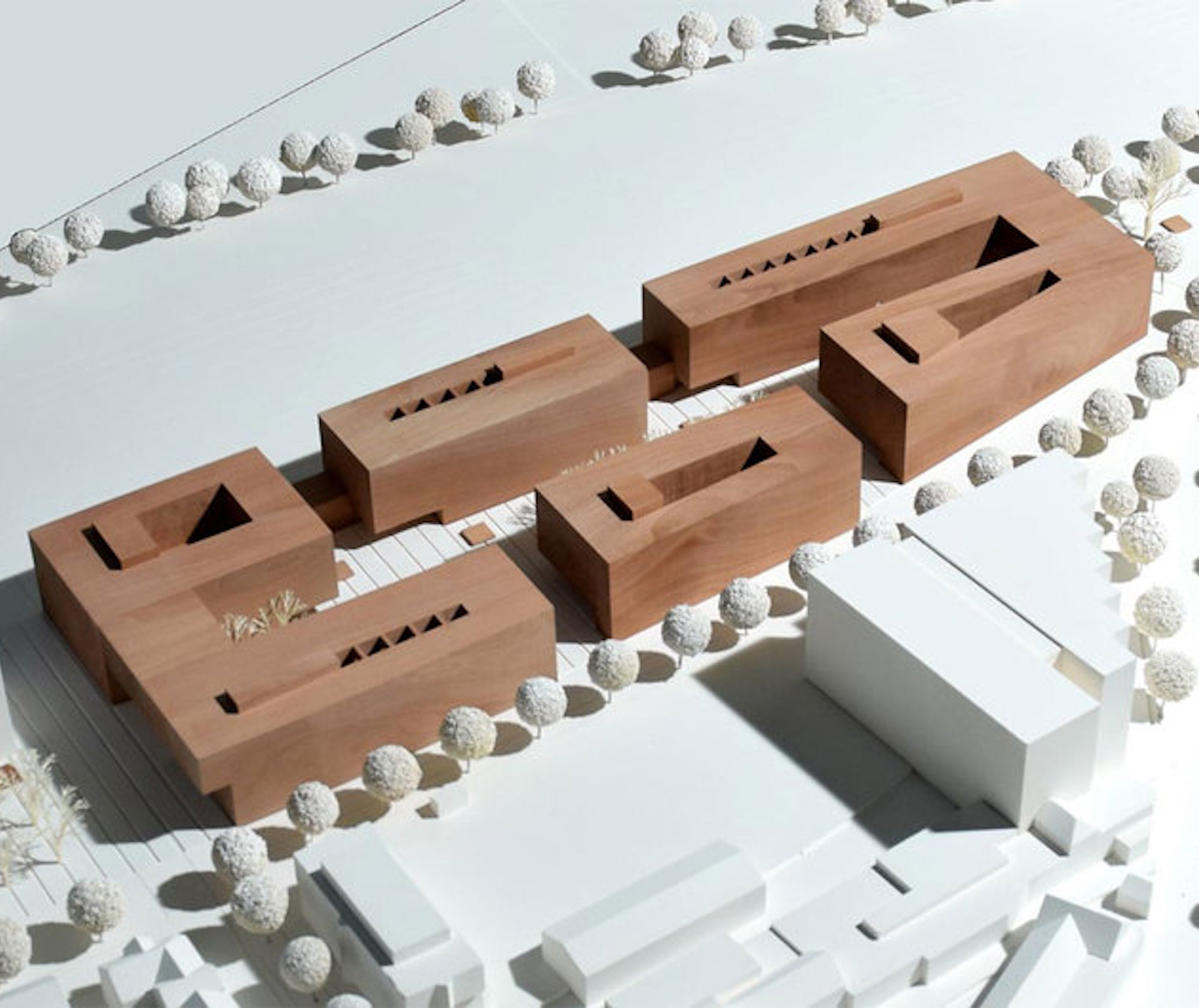

Crystal Rock
The “Crystal Rock” is considered a milestone in the development of the urban quarter. The modern office and commercial building is to reflect the city’s tradition, its history and its future. The unusual and structurally sophisticated building was designed by MVRDV from Rotterdam on behalf of the Saarbrücken-based investor RVI GmbH. The Dutch company is one of the most successful architectural firms worldwide. The design “The Milestone – a Crystal Rock” forms the basis for the construction of “Block E” in the Climate District Neue Weststadt in Esslingen.
Guide for Future Projects
The accomplishment of the project is accompanied by technical and social innovations. If all ideas are successfully implemented, a virtually climate-neutral and energy-orientated urban district will be created that is worth living in and can thus serve as a shining example for future development projects and citizen participation processes in other municipalities.


Social Research and Monitoring
The successful implementation of the project, which is key to the urban and ecological development of the city of Esslingen, is professionally accompanied by technical and socio-scientific monitoring.
Lighthouse Projects Germany
In addition to “Neue Weststadt” in Esslingen, the lighthouse projects funded in Germany include the following: “Quarree100” in Heide, “Stadtquartier 2050 – Solving challenges together” in Stuttgart (Olgahospital) and Überlingen, “Pfaff” – former factory site in Kaiserslautern, “ZED” – zero-emissions district in Zwickau and “ENaQ – Energetisches Nachbarschaftsquartier” in Oldenburg.
